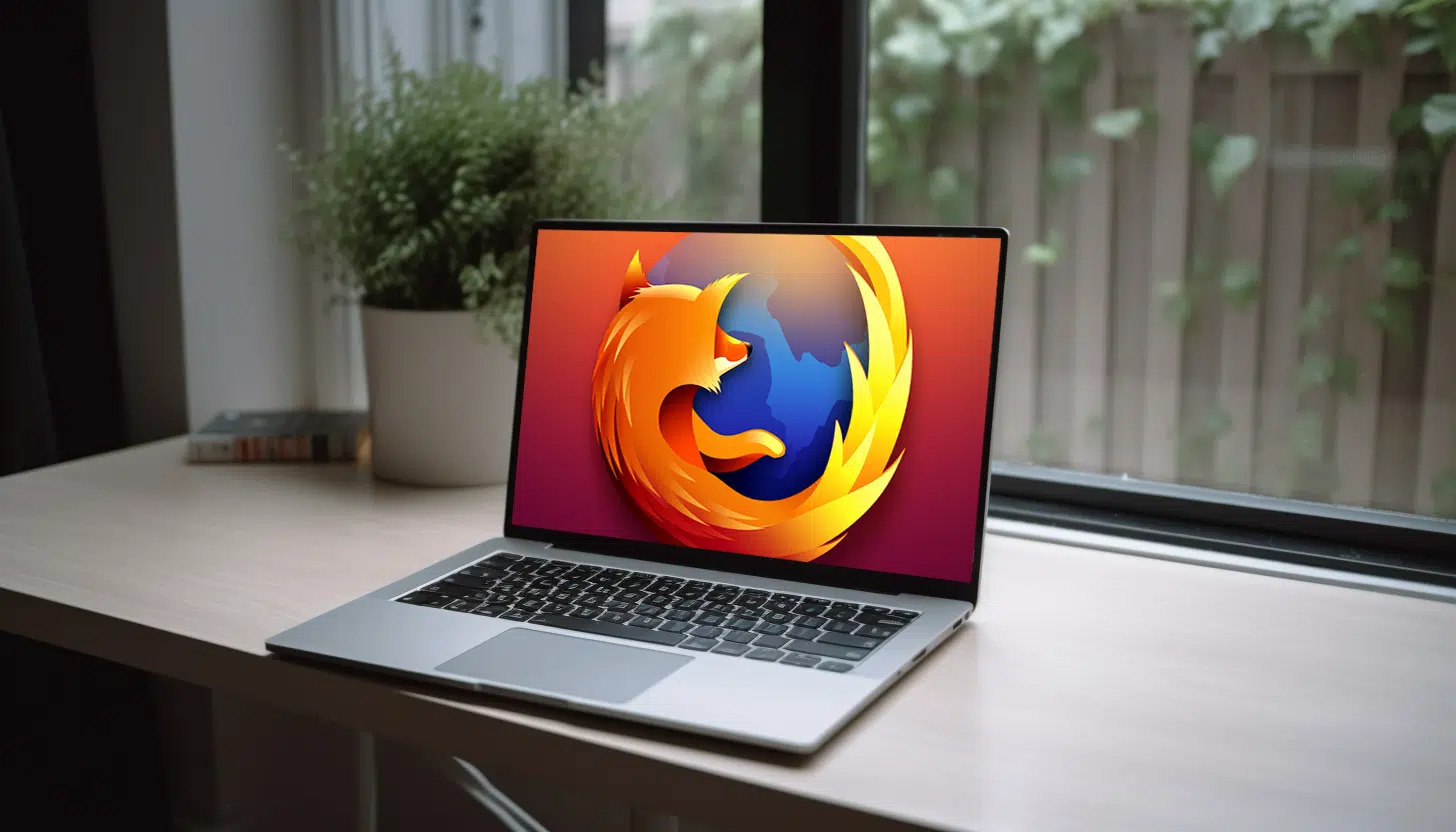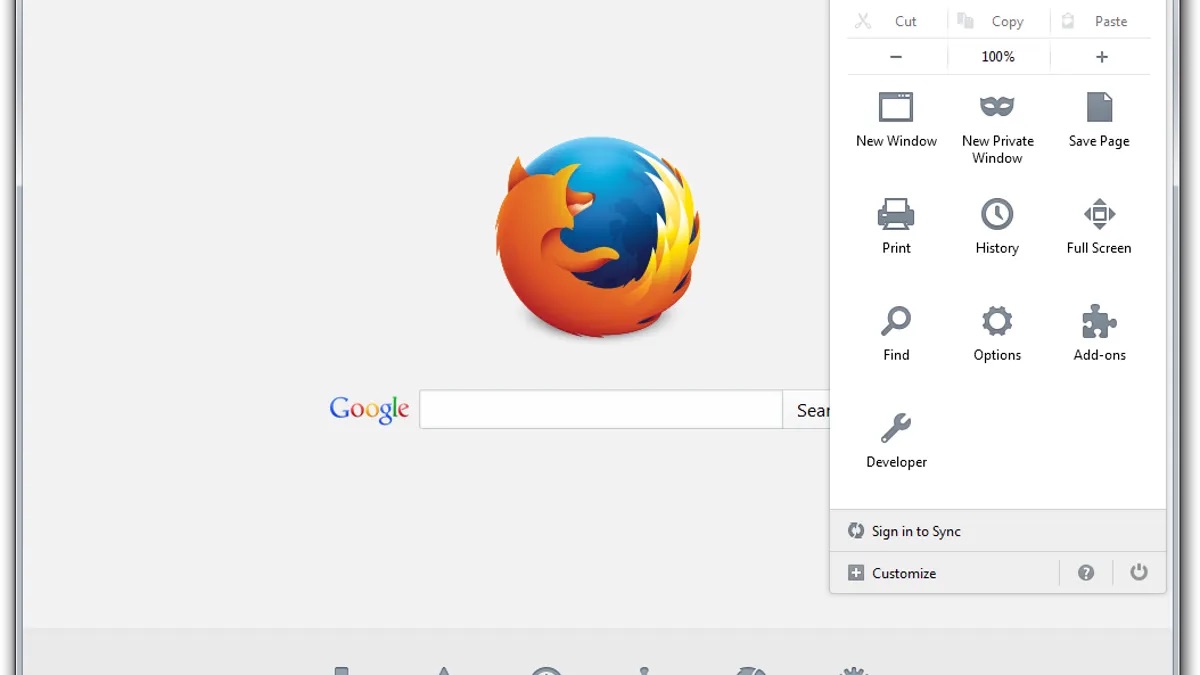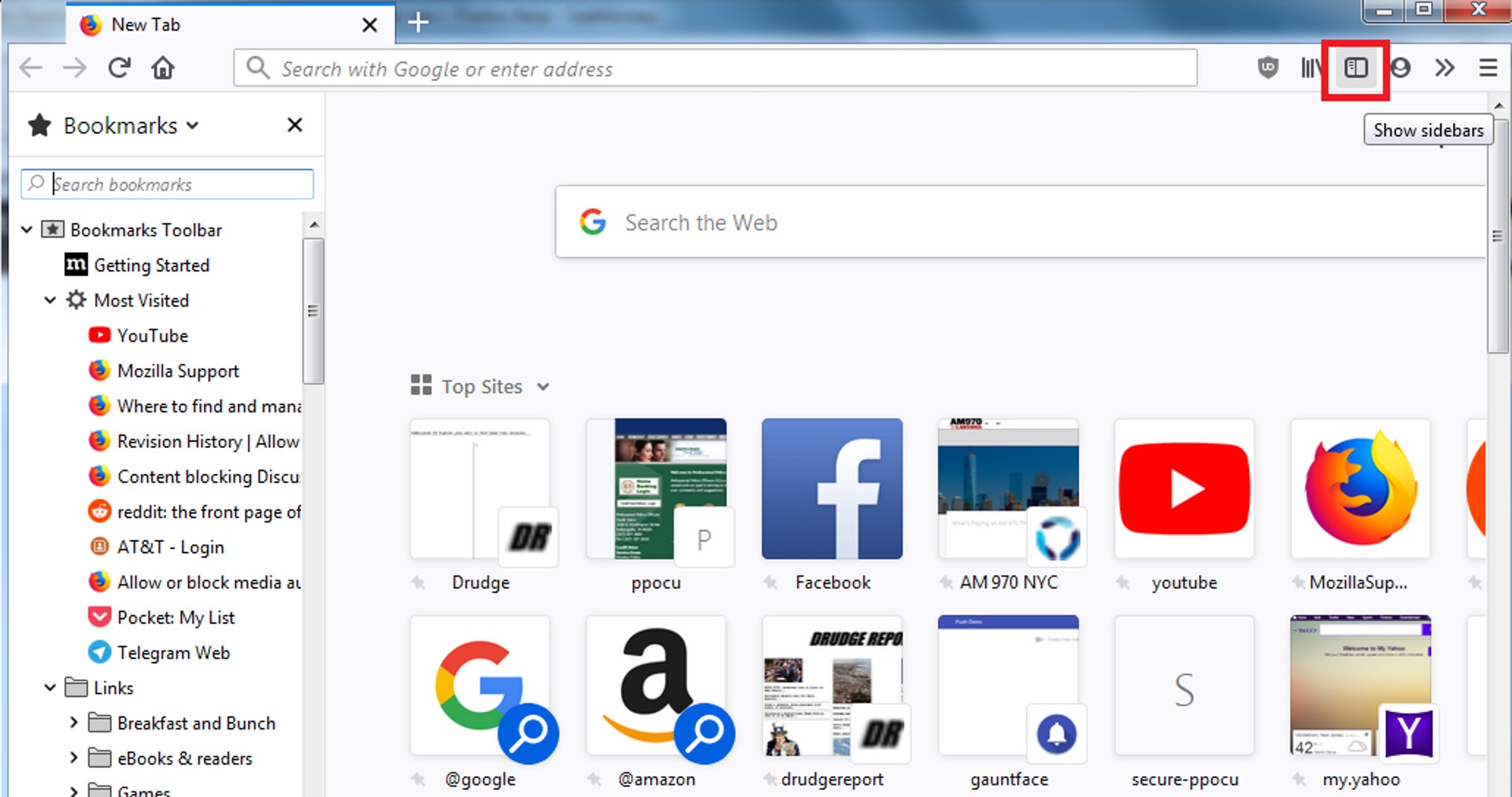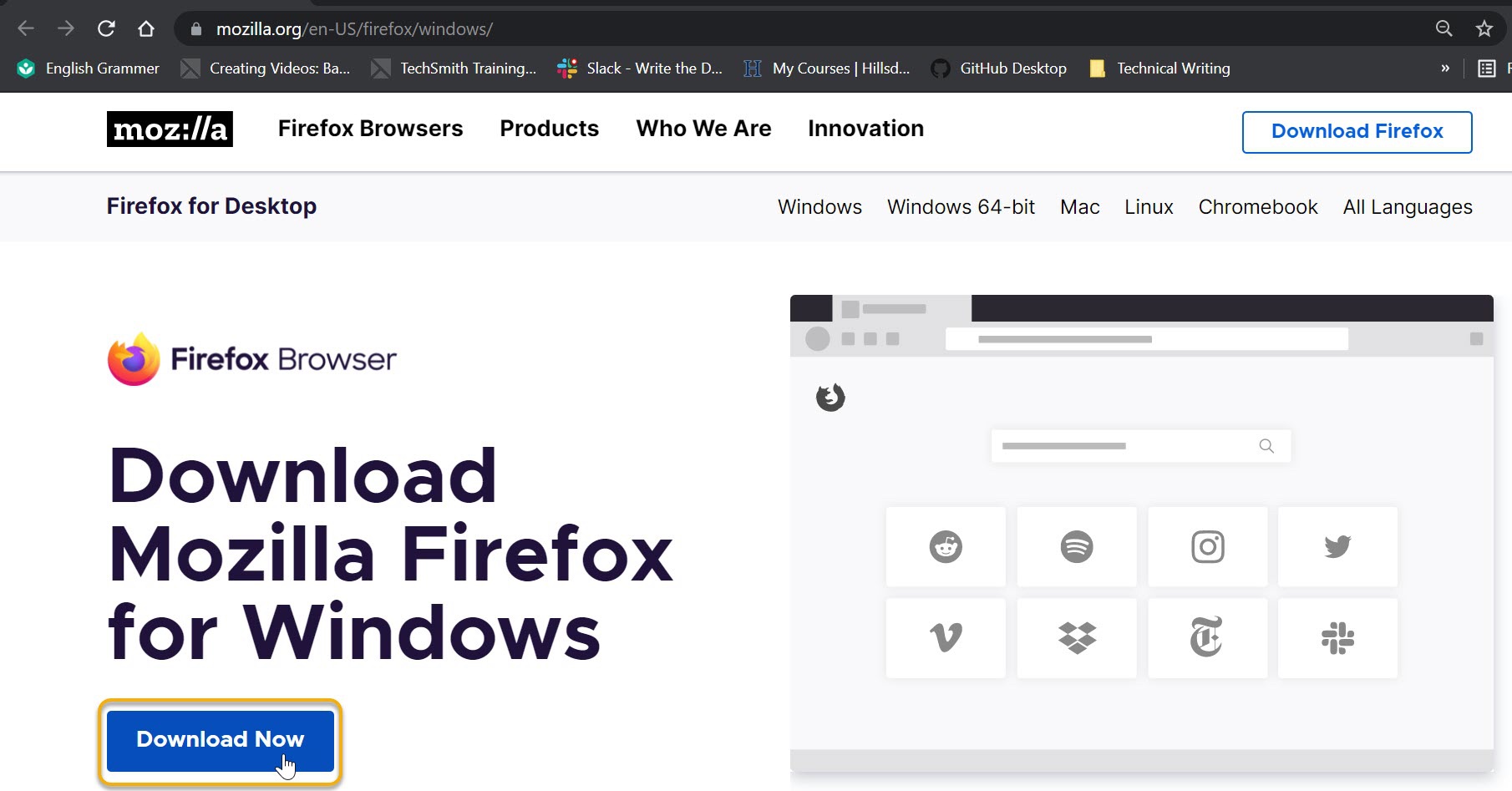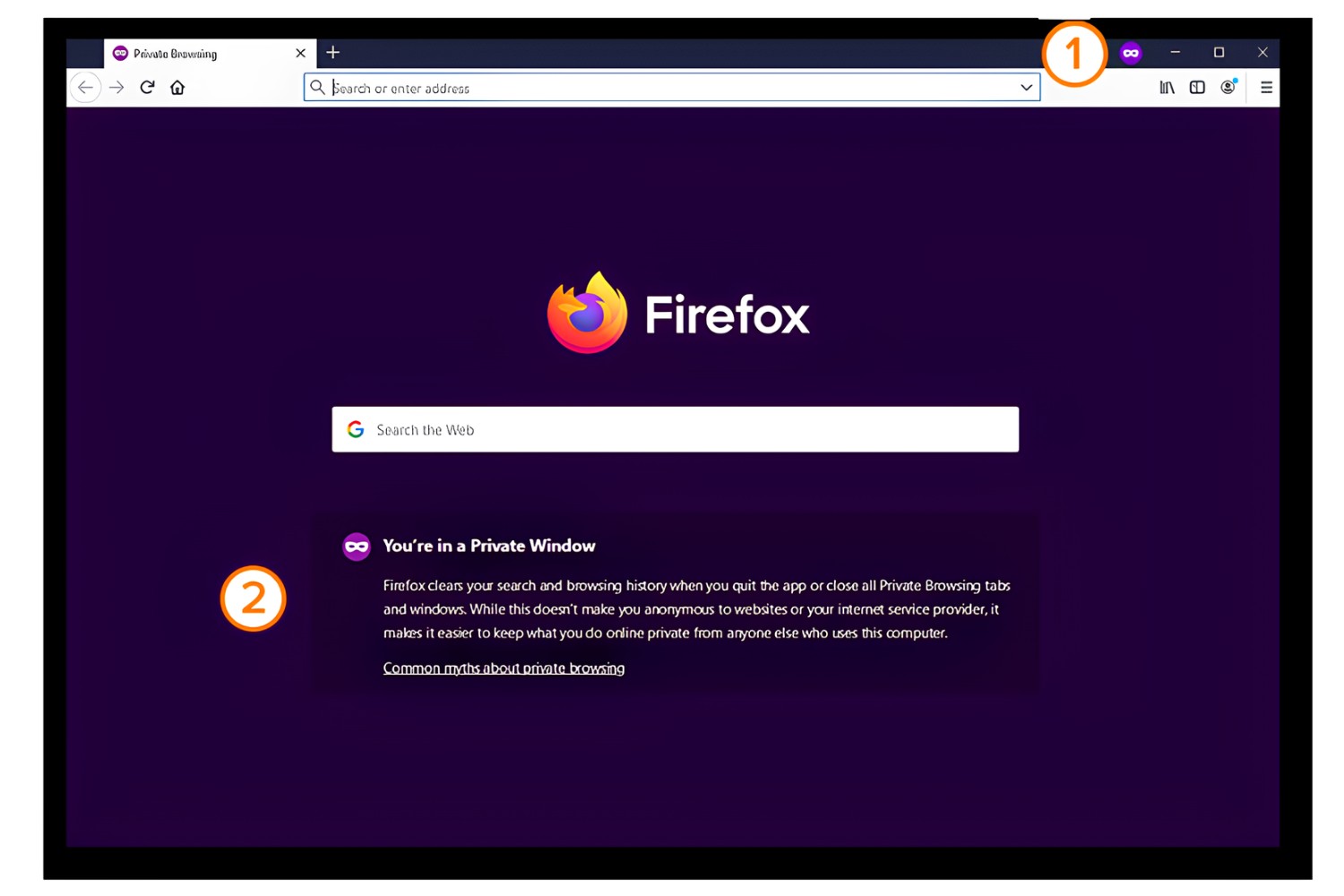Introduction
Having quick access to your favorite web browser can significantly enhance your browsing experience. Firefox, known for its speed, privacy features, and customization options, is a popular choice for many users. However, finding the Firefox icon on your desktop can be a convenient way to launch the browser without having to navigate through menus or search for it. In this article, we will explore several methods to get the Firefox icon on your desktop, making it easily accessible with just a single click.
Whether you are a long-time Firefox user or someone who is just getting started with this versatile browser, having the Firefox icon on your desktop can streamline your browsing activities. By following the methods outlined in this article, you can ensure that the Firefox icon is readily available, allowing you to launch the browser effortlessly and dive into your favorite websites, online resources, and productivity tools without any unnecessary delays.
Now, let's delve into the various methods that will enable you to place the Firefox icon on your desktop, providing you with a convenient way to access the browser and all its powerful features. Whether you prefer a straightforward approach using the Firefox installer or creating a shortcut from the Start Menu, Taskbar, or File Explorer, we've got you covered with step-by-step instructions to make the Firefox icon easily accessible on your desktop. Let's get started and ensure that Firefox is just a click away, ready to serve as your gateway to the vast expanse of the internet.
Method 1: Using the Firefox Installer
One of the most straightforward ways to get the Firefox icon on your desktop is by utilizing the Firefox installer. When you download and install Firefox on your computer, the installer typically provides an option to create a desktop shortcut. This allows you to launch Firefox directly from your desktop, providing quick and convenient access to the browser.
To begin, you can download the Firefox installer from the official Mozilla website. Once the installer is downloaded, double-click on the file to initiate the installation process. As you progress through the installation steps, you will likely encounter an option to create a desktop shortcut. Ensure that this option is selected to enable the installer to place the Firefox icon on your desktop upon completion of the installation.
After the installation is complete, you can navigate to your desktop and locate the newly created Firefox icon. This icon serves as a direct link to the Firefox browser, allowing you to launch it with a single click. By leveraging the Firefox installer, you can effortlessly integrate the browser into your desktop environment, making it easily accessible whenever you need to browse the web, access online services, or engage in productivity tasks.
By using the Firefox installer to place the Firefox icon on your desktop, you can streamline your browsing experience and eliminate the need to search for the browser in menus or shortcuts. This method offers a simple and effective way to ensure that Firefox is readily available, empowering you to harness the full potential of the browser's features and capabilities without any unnecessary navigation or delays.
In summary, utilizing the Firefox installer to create a desktop shortcut provides a convenient and efficient way to access the Firefox browser. By following the installation process and ensuring that the desktop shortcut option is selected, you can seamlessly integrate the Firefox icon into your desktop environment, enabling quick and easy access to the browser whenever you need it.
Method 2: Creating a Shortcut from the Start Menu
Creating a shortcut to Firefox from the Start Menu is another convenient method to ensure quick access to the browser. This approach is particularly useful for users who frequently utilize the Start Menu to launch applications and access various features on their Windows operating system.
To begin, navigate to the Start Menu by clicking on the Windows icon located at the bottom-left corner of your screen or by pressing the Windows key on your keyboard. Once the Start Menu is open, you can locate the Firefox application by scrolling through the list of installed programs or by typing "Firefox" in the search bar.
Once you have located the Firefox application in the Start Menu, right-click on it to reveal a context menu. Within this menu, you should see an option to "More" or "Open file location." Selecting this option will open the folder containing the Firefox application shortcut.
With the folder open, you can right-click on the Firefox shortcut and choose the "Copy" option from the context menu. After copying the shortcut, you can close the folder and return to your desktop or any other location where you want to place the Firefox shortcut.
Upon reaching your desired location, right-click on an empty area and select the "Paste" option from the context menu. This action will paste the Firefox shortcut onto your desktop or the chosen location, creating a direct link to the Firefox browser.
Once the Firefox shortcut is in place, you can easily launch the browser by double-clicking on the shortcut icon. This streamlined approach eliminates the need to navigate through menus or search for the browser, providing instant access to Firefox whenever you need it.
By creating a shortcut to Firefox from the Start Menu, you can seamlessly integrate the browser into your desktop environment, ensuring that it is readily accessible with just a single click. This method empowers you to harness the full potential of Firefox's features and capabilities, enhancing your browsing experience and productivity.
In summary, creating a shortcut to Firefox from the Start Menu offers a convenient and efficient way to ensure quick access to the browser. By following these simple steps, you can place the Firefox shortcut on your desktop or any preferred location, enabling seamless and immediate access to the browser whenever you need it.
Method 3: Creating a Shortcut from the Taskbar
Creating a shortcut to Firefox from the taskbar provides a convenient and easily accessible way to launch the browser directly from the desktop environment. The taskbar, located at the bottom of the screen in Windows operating systems, serves as a quick access area for frequently used applications, making it an ideal location to place the Firefox shortcut.
To begin, you can open the Firefox browser and ensure that it is running. Once Firefox is open, locate its icon on the taskbar. Right-click on the Firefox icon to reveal a context menu containing various options related to the browser.
Within the context menu, you should see an option labeled "Pin to taskbar" or a similar option that allows you to pin the Firefox icon to the taskbar. Selecting this option will affix the Firefox icon to the taskbar, ensuring that it remains easily accessible for future use.
After pinning the Firefox icon to the taskbar, you can simply click on it to launch the browser whenever you need to access it. This streamlined approach eliminates the need to navigate through menus or search for the browser, providing immediate access to Firefox with just a single click.
By creating a shortcut to Firefox from the taskbar, you can seamlessly integrate the browser into your desktop environment, ensuring that it is readily accessible whenever you need it. This method empowers you to harness the full potential of Firefox's features and capabilities, enhancing your browsing experience and productivity.
In summary, creating a shortcut to Firefox from the taskbar offers a convenient and efficient way to ensure quick access to the browser. By following these simple steps, you can place the Firefox shortcut on the taskbar, enabling seamless and immediate access to the browser whenever you need it.
Method 4: Creating a Shortcut from the File Explorer
Creating a shortcut to Firefox from the File Explorer provides a flexible and customizable way to ensure quick access to the browser directly from your desktop or any preferred location. By leveraging the capabilities of the File Explorer in Windows operating systems, you can easily place the Firefox shortcut where it is most convenient for you, allowing for seamless integration into your desktop environment.
To begin, open the File Explorer by clicking on the folder icon located on your taskbar or by pressing the Windows key + E on your keyboard. Once the File Explorer is open, navigate to the location where the Firefox application is installed. This is typically within the "Program Files" or "Program Files (x86)" directory, depending on your system architecture.
Upon locating the Firefox application in the File Explorer, right-click on the Firefox executable file (usually named "firefox.exe") to reveal a context menu. Within this menu, select the "Create shortcut" option. This action will generate a shortcut to the Firefox application in the same location as the original executable file.
After creating the shortcut, you can simply click and drag it to your desktop or any other preferred location within the File Explorer. This allows you to place the Firefox shortcut exactly where you want it, providing convenient access to the browser without having to navigate through menus or search for it.
Once the Firefox shortcut is in place, you can effortlessly launch the browser by double-clicking on the shortcut icon. This streamlined approach ensures that Firefox is readily accessible whenever you need it, empowering you to dive into the vast expanse of the internet with just a single click.
By creating a shortcut to Firefox from the File Explorer, you have the flexibility to customize the placement of the shortcut, ensuring that it seamlessly integrates into your desktop environment. This method empowers you to tailor the location of the Firefox shortcut to your preferences, enhancing your browsing experience and productivity.
In summary, creating a shortcut to Firefox from the File Explorer offers a flexible and customizable way to ensure quick access to the browser. By following these simple steps, you can place the Firefox shortcut in a location that best suits your workflow, enabling seamless and immediate access to the browser whenever you need it.
Conclusion
In conclusion, ensuring that the Firefox icon is readily accessible on your desktop can significantly enhance your browsing experience. By following the methods outlined in this article, you can seamlessly integrate the Firefox browser into your desktop environment, ensuring that it is just a click away whenever you need to explore the internet, access online resources, or engage in productivity tasks.
Whether you opt to use the Firefox installer to create a desktop shortcut, leverage the Start Menu to place the Firefox shortcut on your desktop, pin the Firefox icon to the taskbar for quick access, or customize the placement of the Firefox shortcut using the File Explorer, each method offers a convenient and efficient way to ensure that Firefox is easily accessible.
By having the Firefox icon on your desktop, you eliminate the need to navigate through menus or search for the browser, streamlining your access to Firefox and empowering you to harness its full potential. Whether you are a casual user, a power user, or someone who values speed, privacy, and customization in a browser, having the Firefox icon within reach ensures that you can dive into the online world with ease.
The ability to launch Firefox with just a single click provides a seamless transition into your browsing activities, allowing you to explore websites, access online services, and leverage the browser's features without any unnecessary delays. This convenience not only saves time but also enhances your overall productivity, making Firefox an integral part of your digital workflow.
In essence, by following the methods outlined in this article to place the Firefox icon on your desktop, you are taking a proactive step to optimize your browsing experience. Whether you are driven by efficiency, convenience, or a desire to streamline your digital interactions, having the Firefox icon within arm's reach ensures that you are always just a click away from the vast expanse of the internet.
So, go ahead and choose the method that best suits your preferences, and ensure that the Firefox icon becomes a prominent and easily accessible feature on your desktop. With Firefox just a click away, you are poised to embark on a seamless and enriching browsing journey, empowered by the speed, privacy, and customization that Firefox has to offer.








